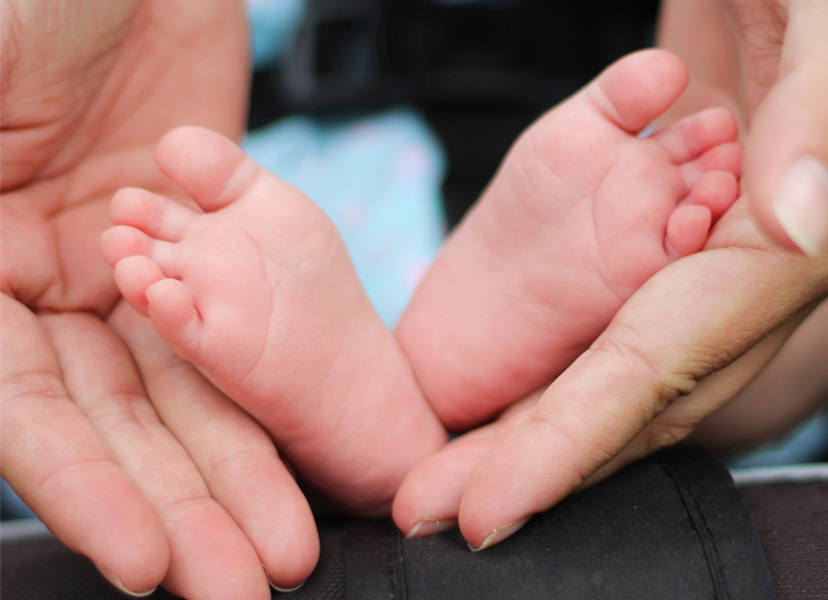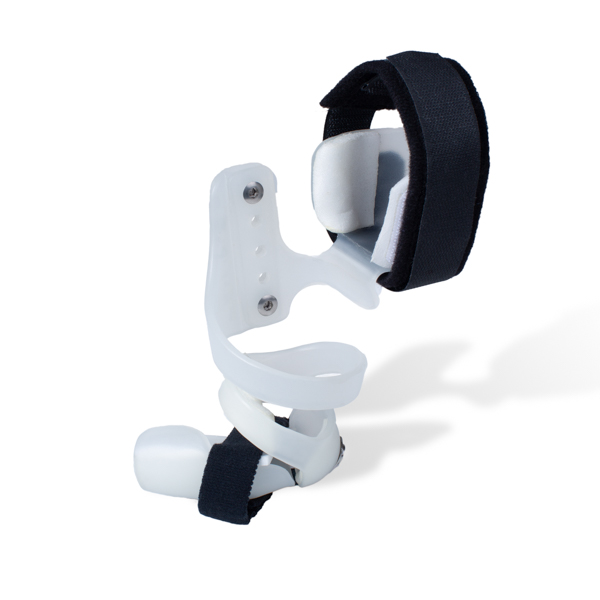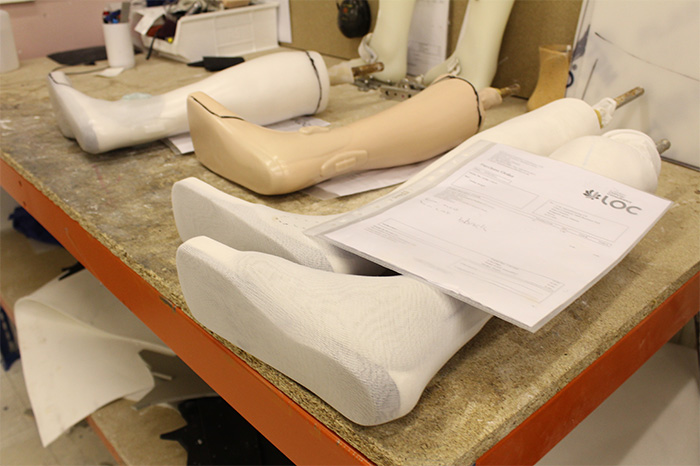Club foot or clubfoot, is a term for the medical condition congenital talipes equinovarus (CTEV). It is a congenital deformity involving one foot or both. It is relatively common, affecting around one in every 1,000 babies born in the UK. Both feet are affected in around half of the children born with the condition.
The affected foot appears to have been rotated internally at the ankle. The foot points downwards and inwards, with the soles of the feet facing backwards.
Without treatment, people with club feet often appear to walk on their ankles or on the sides of their feet.
While a baby is young, natural flexibility can be utilised to get things back to where they belong. In most cases, the foot will respond well to conservative correction using the Ponseti method which involves manipulation, serial casting and a very small procedure to release the tight Achilles tendon at the back of the ankle.
There follows a long period of maintenance of the corrected position of the feet, traditionally this has been achieved with what is called the boots and bar approach.
LOC is pioneering the use of a different brace in this final phase of treatment – the Cunningham Brace.
Steps is a registered charity working for all those whose lives are affected by childhood lower limb conditions and is a founding partner of Global Club Foot Initiative.


The Ponseti method is the gold standard treatment for club foot in the UK and most of the world.
The method involves gently manipulating the baby’s foot into a better position and then putting it into a cast.
Babies will then need to wear special boots attached to each other with a bar, to prevent club foot returning.

LOC has been given the exclusive rights to prescribe & fit the Cunningham brace in the UK and Europe which forms a key part of our Clubfoot treatment.
The Cunningham Brace is an alternative to the traditional boots and bar approach commonly prescribed.
The Cunningham brace is used for paediatric treatment whereas adults can benefit from LOC's bespoke orthotics.

The Cunningham brace is the brainchild of Jerald Cunningham, a certified American prosthetist and orthotist.
It is a flexible brace that is only fitted to the affected leg and allows movement for all of the normal activities.
Gerald developed his brace in response to observing the distress to both child and parent with the Boots and Bar approach.

Find out more about club foot and the signs you can look out for in our frequently asked club foot questions from our existing and previous clients.
Learn how club foot can be treated with the Ponseti method and Cunningham brace.
If left untreated, people with club feet often appear to be walking on their ankles or the sides of their feet.

Learn all about the clinical research behind the Cunningham brace treatment.
Learn about how the innovative design for the treatment of Talipes equinovarus, utilizing dynamic tri-planar stretching rather than static positioning is resulting in effective maintenance following Ponseti-casting of clubfeet.

LOC’s clubfoot treatment cost depends on whether one foot or both feet need treating.
Depending on the age of the child when LOC’s treatment commenced and the rate of growth of the child a replacement brace may be required.
The purpose of Jerald’s white paper is to present information about his alternative protocol to the Boots and Bar approach. His innovative orthotic management of Talipes equinovarus is being utilized on a small scale and is resulting in effective maintenance following Ponseti-casting of club feet.

Due to the relatively recent introduction of the Ponseti method, patients living with club foot have to seek bespoke orthotics in order to improve their comfort and minimise pain.
At LOC, we prescribe and manufacture all ranges of orthoses to cater for this need. Dependent on what treatments you may have had in the past, our clinicians will review your current symptoms and discuss what goals you want to achieve; this will help your clinician determine which is the right orthotic treatment for you.
You can visit our Bespoke Orthotics page to see our full range or alternatively, read more about Adult Club Foot Treatment.

Victor the Robot, our new Computer Numerical Control milling machine, in action! Victor is noisy, but he’s transforming our ability to design and manufacture orthotic devices at our Kingston-upon-Thames clinic.
Manufactured by Rodin4D, Victor is capable of milling complex ergonomic shapes, meaning that we can now potentially assess a spinal orthotic patient, manufacture the orthosis and have it fitted, all in the space of a day. Victor can do everything we need to do for our patients, in-house and in the shortest time possible with no compromise on quality.

“It’s life-changing, my swimming coach has even remarked what a difference my treatment has made" Read how pectus bracing treatment helped to correct Aris' complex chest deformity, involving a combination of pectus excavatum, pectus carinatum and rib flaring.

Cerebral palsy patient Lucas sees significant improvement in his walking after only six months in his new custom Ankle Foot Orthoses (AFOs), designed by Professor Saeed Forghany in our Manchester clinic. Hear how a detailed gait analysis and bespoke AFOs significantly improved Lucas's gait and comfort.

Freddie’s positional plagiocephaly was treated successfully with the LOCBand Lite, going from 11mm to 2mm after four months in his helmet.

Adult club foot (talipes) patient Natasha says, "I cannot stress how amazing my AFOs are and how they have changed so much for me. The support they give me allows me to walk without crutches outside the house for the first time in over fifteen years."

Diagnosed with adolescent idiopathic scoliosis at 14 years old, Polly and mum Zoe looked to the LOC Scoliosis Brace to help her curve and avoid surgery at a later date.

LOC opens its first clinic in Northern Ireland, LOC Belfast, offer non-surgical orthotic treatment for scoliosis, pectus carinatum and pectus excavatum. Here, we will also be able to provide orthotic treatments for a range of adult and paediatric lower limb conditions including cerebral palsy, spina bifida, hypermobility, stroke, post-polio syndrome, and multiple sclerosis.

Mum Natalie shares her experience of having both her identical twins diagnosed with craniosynostosis. Ella and Nina had surgery at Great Ormond Street Hospital before going through cranial remoulding therapy at the London Orthotic Consultancy.

See how a thorough gait analysis and a correctly-fitted, bespoke Reciprocating Gait Orthosis (RGO) helped Ted, a spinal surgery and cancer survivor, improve his rehabilitation and mobility goals, getting him back on his feet again.